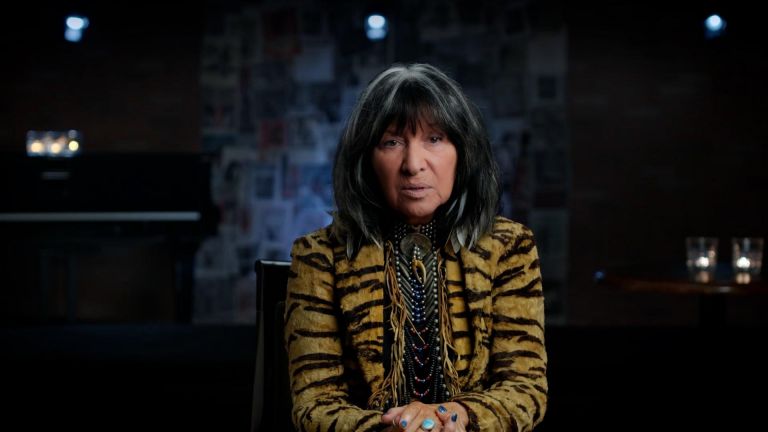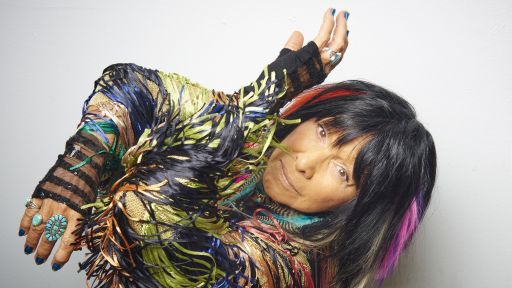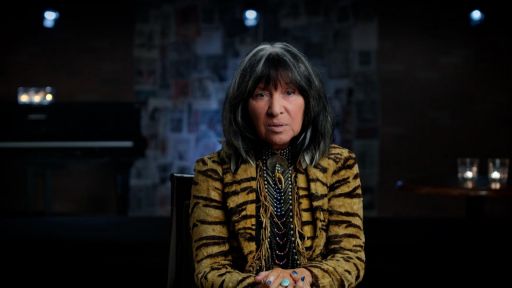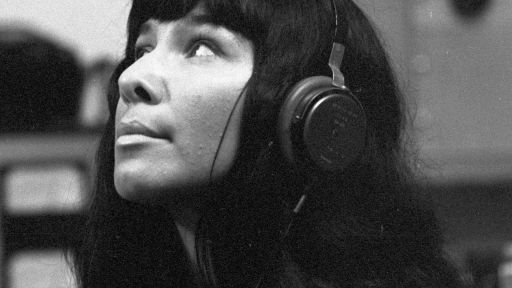Buffy Sainte-Marie is a living legend and a musical genius. But she’s also “Buffy who?” to a lot of people who have never heard of her before.
Her name belongs alongside the likes of Bob Dylan and Joni Mitchell, but Sainte-Marie has been deeply unappreciated and overlooked, her milestones and innovations erased from mainstream culture, and her music suppressed by two government administrations in the 1960s and 1970s. She’s an Indigenous icon, and somewhat famous amongst settler Canadians, but much less so amongst settler Americans.
Sainte-Marie has spent six decades (and counting) making music and making history.
In 1969, she released one of the first quadraphonic electronic records, “Illuminations”; in 1977, she was the first person to nurse her baby on television as a part-time cast member of “Sesame Street”; in 1983, she was the first Indigenous woman to win an Academy Award for co-writing “Up Where We Belong” for the film “An Officer and a Gentleman”; in 1991, she was the first artist to make an album over the internet; in 2015, she became the first septuagenarian to win Canada’s prestigious Polaris Music Prize. Yet despite all of her accomplishments—and these are just a few—Sainte-Marie still hasn’t received the recognition she deserves.
But everybody should know Buffy Sainte-Marie, and not just because of that epic list of firsts. Her music spans a multiplicity of genres, and her influence, innovation, and endless creativity are everywhere. She’s a masterful songwriter. She is unfailingly committed to Indigenous rights, and a generous teacher and humanitarian who uses her time in the spotlight to shine a light on others. And please note that she is not past-tense, she is timeless. Sainte-Marie is of every moment, active and vital, and continues vrooming through life with an insatiably curious and hopeful spirit. This also means there’s always another facet to her brilliance waiting to reveal itself if you just dig a little deeper.
Now is the time to get into the medicine of Buffy Sainte-Marie, and that means starting with the music.
Whether you’re Sainte-Marie’s biggest fan or a new arrival looking for your way in, figuring out “where to start” when it comes to Buffy Sainte-Marie can be overwhelming.
These five albums are a good foundation for newcomers, and great records to revisit for even Sainte-Marie’s most diehard devotees.
1. “It’s My Way!” (1964)
Sainte-Marie’s stunning debut is almost 60 years old and is packed with songs that have not aged at all: “Universal Soldier” holds up a harsh mirror to all of us for our complicity in war, “Cod’ine” takes the listener inside the ravages of living with addiction, and “Now That the Buffalo’s Gone” centers on Indigenous rights and treaty violations.
2. “Illuminations” (1969)
This is a wonderfully wild and immersive listening experience unlike almost anything else that was released in 1969 and it could really only have come from the brain of Buffy Sainte-Marie, a creative innovator who embraces cutting-edge technology years before almost everybody else. The first quadraphonic electronic album, “Illuminations” boasts myriad moods and a variety of vibes from the crescendoing Leonard Cohen adaptation “God Is Alive Magic is Afoot” and the raucous “Better to Find Out for Yourself” to the gently aching “Dream Tree” and gothic sprawl of “Poppies.”
3. “Coincidence and Likely Stories” (1991)
It had been 16 years since Sainte-Marie released her last album, and “Coincidence and Likely Stories” wasn’t just a technological triumph (it was the first record made over the internet) but an artistic one, too. It is the sound of Sainte-Marie stepping back into herself as a creator and a person freshly unencumbered. During her time away from releasing records, she’d raised her son, Cody, left an abusive marriage to Jack Nitszche (one of her co-winners for the 1983 Academy Award for Best Original Song for “Up Where We Belong”), and found out that she hadn’t just fallen out of favor as she thought in the 1970s, but that two different government administrations had suppressed her music. Sainte-Marie addresses all of this on the album, from the tense title track and the haunting and bluesy “Bad End,” to the devastating rocker “Bury My Heart At Wounded Knee” and the powwow sampling love letter to Indigenous leaders in “Starwalker.”
4. “Power in the Blood” (2015)
This record was a jaw-dropper that nobody saw coming, except, of course, Sainte-Marie herself. Working with four different producers, “Power in the Blood” takes the listener from the club to the country to the powwow and everywhere in between. The title track is a frenetic electro-rock stomper while “Farm in the Middle of Nowhere” is a sweet little love song and a celebration of the simple things Sainte-Marie adores and “Carry It On” is a rousing anthem for artists, activists and future generations.
5. “Medicine Songs” (2017)
With just two “new” tracks in the mix, “Medicine Songs” is a worthy career-spanning overview of songs that Sainte-Marie herself deems “medicine.” These are some of the songs Sainte-Marie wants to “put to work.” The digital release boasts two interpretations of Sainte-Marie’s contemporary anti-war song, “The War Racket.” The first version is a slinky, outraged rock number while the bonus version is stripped down and acoustic, searing in its contempt for the profiteers and propagandists. There’s also the urgent and uplifting rock-and-roll-and-throat-singing track “You Got To Run” featuring Tanya Tagaq, and Sainte-Marie’s unflinching 1966 folk song, “My Country ’Tis of Thy People You’re Dying,” which lays out the truth of colonization as genocide for Indigenous people.
It would be easy to just say that Sainte-Marie has always been ahead of her time. And yes, she has.
But in the wrong hands, “ahead of her time” can be a kind of weaponised euphemism because it doesn’t require those in power to acknowledge systemic barriers like racism and sexism. Sainte-Marie is an Indigenous woman living in a society shaped by genocide and colonization and late-stage capitalism. There’s ongoing settler-colonial violence, anti-Indigenous racism, misogyny, gendered violence and so much more.
There is also a tremendous amount of joy and creativity in Sainte-Marie’s music and life, and she knows when to protect her time and nurture herself. She is a visionary and a creator who dreamed not of fame and fortune, but of being effective with her music. To this day all she wants is to see her songs “put to work.” But as Sainte-Marie says, she realized early on that sometimes you just have to carry the medicine for a long time until the world is ready for it.


























